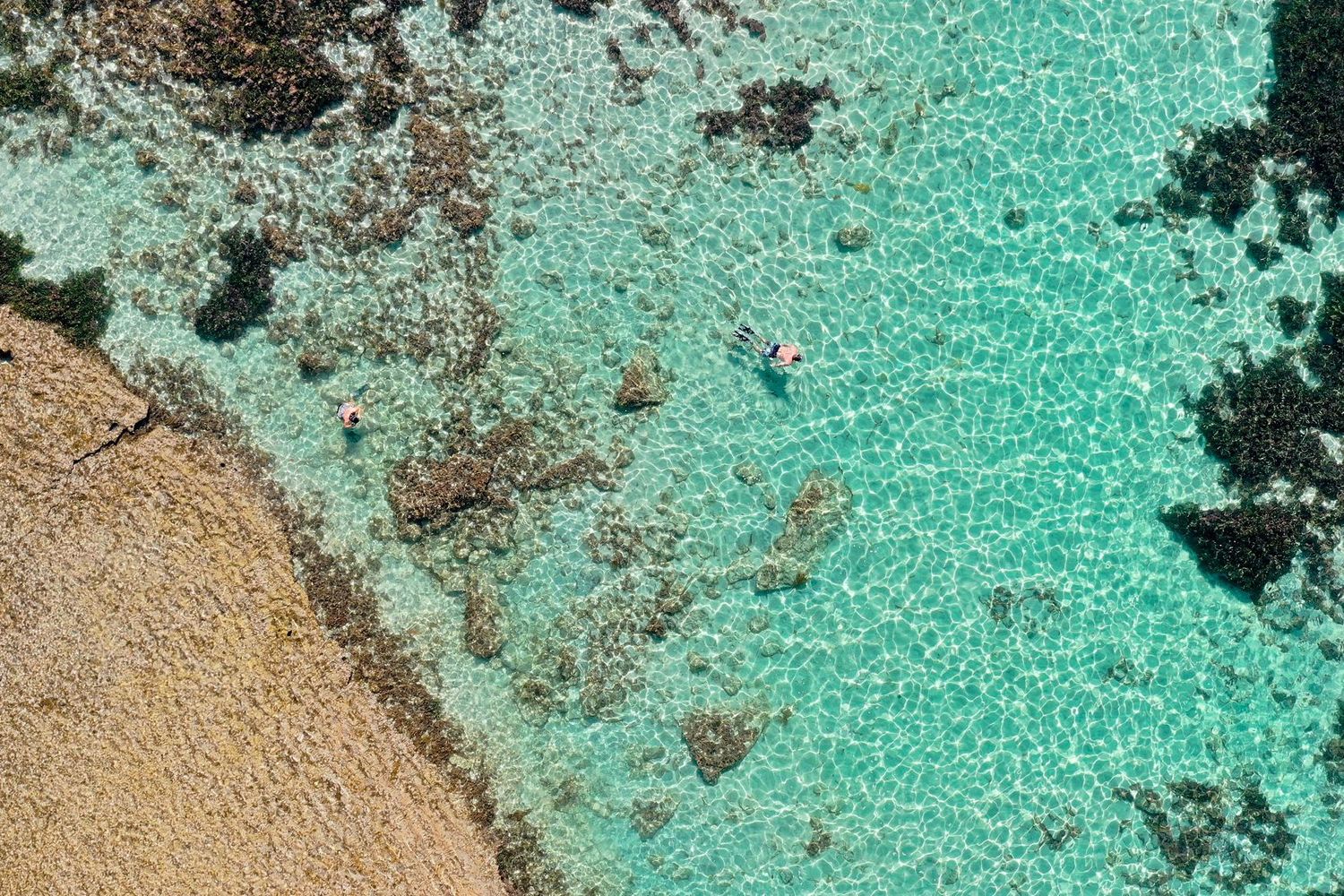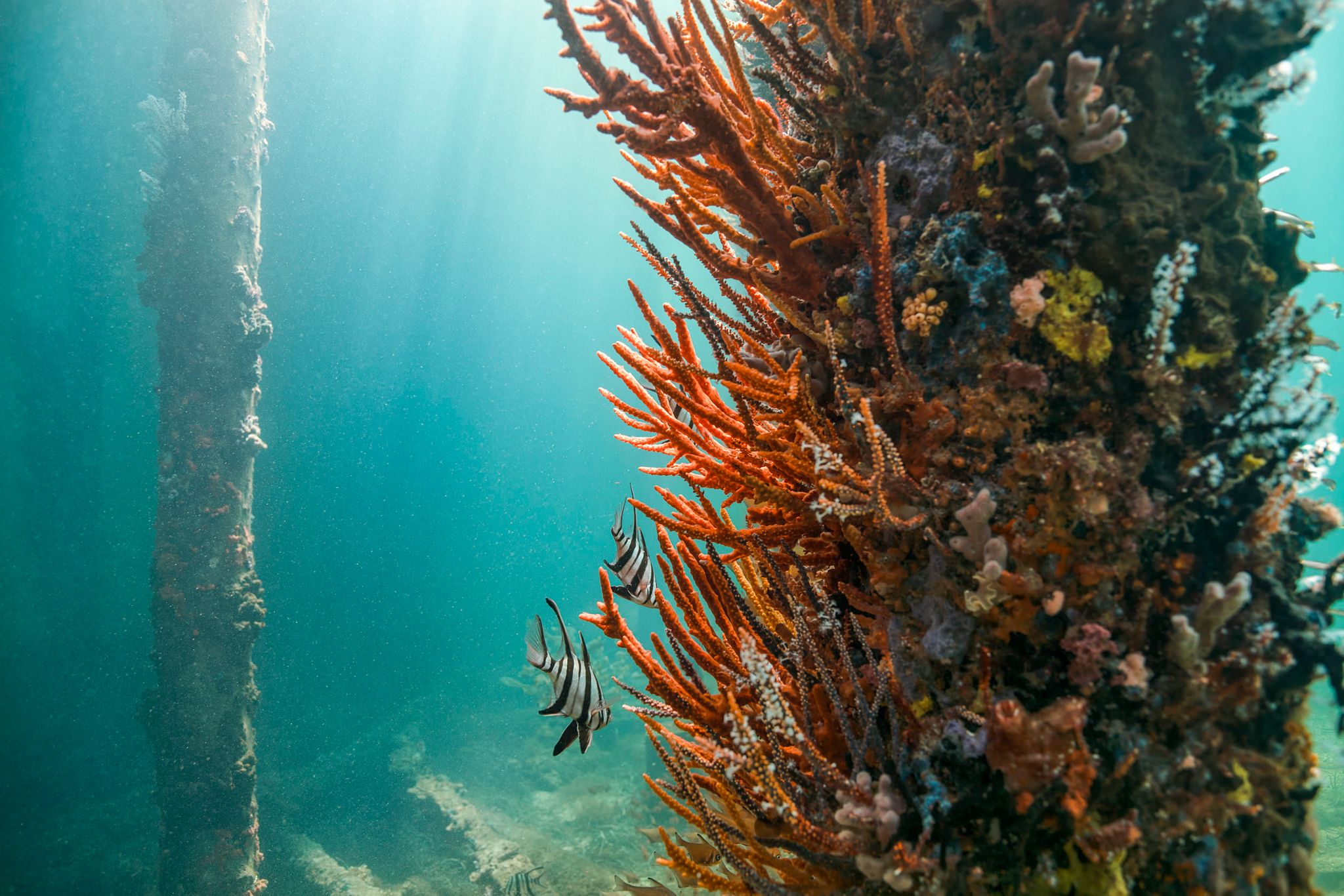One of Australia’s first sunken dive wrecks, the HMAS Swan DE 50 was a river-class destroyer escort, purpose sunk in 1997 as a recreational diving site and artificial reef in Geographe Bay. The former HMAS Swan is 113m long, 12.5m wide and 22.5m tall, making it an exceptionally large dive site to explore.
- ‘Advanced’ level dive: suitable for technical diving and training.
- Ideal conditions for diving: mid-September to mid-May. Depth range 9 – 32m. Visibility (peak season) 10 – 25m. Water temperature (peak season) 19-22°C.
- The Swan Wreck site is a ‘No Take Zone’. Fishing and spearfishing within 200 metres of the yellow marker buoy are not permitted. Taking mementos from the structure or extracting marine life from the site is also not permitted.
The wreck has numerous holes cut into its aluminium and steel hull allowing divers the opportunity for swim-throughs to view the interior. Each entry point allows direct access to an exit point with multiple over-head and alternative exits.
Points of interest in the interior of the wreck include the galley, magazine room, steering gear, control room, funnel uptakes, laundry, toilets and, of course, the bridge. The most recognisable feature outside the wreck is the communications tower or ‘crows nest’, the top of which sits in around nine metres of water. The yellow ‘Swan Wreck’ marker buoy indicates the position of the tower. The engine room is inaccessible to divers.
Possible marine life encounters inside the wreck include schools of bulleye and pike, blue devilfish, western talma, leather jacket, banded sweep and more. Possible marine life encounters outside the wreck include schools of juvenile demersal species such as snapper, as well as flathead, globefish, samson fish, kingfish, batfish and even the odd nudibranch. You may be lucky enough to meet one of the resident wobbegongs! You will find numerous species of hard and soft coral as well as colourful ascidians colonised throughout the entire wreck.
The bow of the wreck points towards Cape Naturaliste and the stern of the wreck points towards Busselton. There are currently two public moorings available for recreational use, indicated by white mooring floats – one at the stern and one at the bow of the ship.










